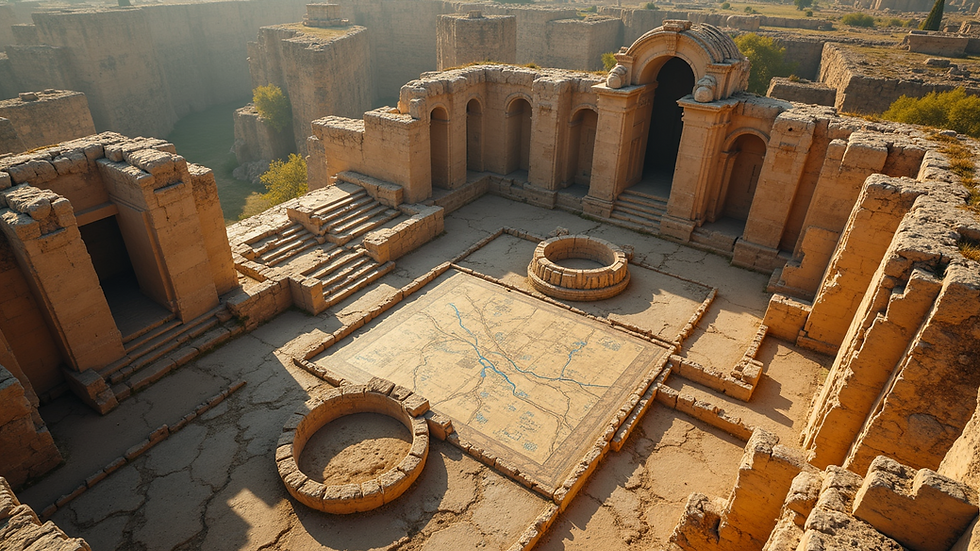How to Create Immersive Adventures for Your D&D Game
- Matthew David
- May 5
- 4 min read
Updated: May 27
Creating immersive adventures for your Dungeons & Dragons (D&D) game can be the difference between a forgettable session and an unforgettable quest. Whether you’re a seasoned Dungeon Master (DM) or just starting, it’s essential to craft experiences that engage your players on multiple levels. Here are some steps on how to create immersive adventures that will captivate your players and leave them wanting more.
Understanding Immersive Adventures
Immersive adventures are not just about rolling dice and combat encounters. They involve creating a world that players can feel a part of. This requires careful planning and creativity. The goal is to transport your players into a vibrant realm filled with rich storytelling and memorable characters.
To develop an immersive adventure, start by defining the tone and setting of your campaign. Are you aiming for a high-fantasy epic or a dark, gritty narrative? You need to know your theme. For example, if your story is set in a haunted forest, you might focus on eerie descriptions, frightening creatures, and mysterious lore.
Creating Compelling Settings
One of the cornerstones of an immersive adventure is a well-constructed setting. The location where your players find themselves can set the mood for the entire campaign. Here are some tips for crafting compelling settings:
Detail Descriptions: Paint a vivid picture of the environment. Use sensory language to describe sights, sounds, and smells. For example, instead of simply saying "a forest," you could describe "an ancient, twisted forest shrouded in a thick mist, with the faint odor of damp earth and decaying leaves."
Incorporate Lore: Build a rich backstory for your settings. Historical events or famous figures can add depth. Perhaps the ancient ruins in your story were once a thriving city now forgotten by time. Sharing this history with your players can foster a deeper connection to the environment.
Vary Locations: Create multiple, diverse locations for your players to explore. A well-rounded campaign should have forests, towns, dungeons, and perhaps even the depths of the ocean or an alien landscape. Each location should come with its own distinct atmosphere and challenges.

Building Engaging NPCs
No immersive adventure is complete without engaging non-player characters (NPCs). These characters provide quests, information, and drama that enrich the game. Here are tips for building memorable NPCs:
Unique Personalities: Give each NPC their own distinct personality. Think about their goals, fears, and quirks. An NPC who is overly cheerful in a dangerous situation can create a fun contrast for the players.
Relatable Motivations: Make NPCs relatable by giving them clear motivations. Perhaps a merchant needs help recovering stolen goods, or a local villager is searching for their lost child. When players understand the NPC's desires, they are more inclined to engage with them.
Interactivity: Create opportunities for players to interact with NPCs. Dialogues that allow players to ask questions, form alliances, or even engage in combat can enhance immersion. You can also use backstories to create connections between players’ characters and the NPCs.

Crafting Engaging Storylines
A good storyline is key to ensuring your players remain engaged. Here’s how to craft engaging storylines:
Create Hooks: Every adventure needs a solid hook to lure players into the narrative. This could be an unexpected attack during a peaceful festival or a mysterious letter leading them to a hidden treasure.
Implement Choices: Allow players to make choices that affect the story's outcome. This can create a more personalized experience and enhance the feeling of immersion. When players see the consequences of their decisions, they become more invested in the outcome.
Introduce Conflict: Every great story has tension and conflict. This could be a villain plotting against the players, natural disasters, or internal group dynamics. The development of conflict keeps players engaged and wanting to resolve the issues they face.
Utilizing Technology and Resources
In today's digital age, utilizing technology can enhance your D&D experience, especially for online D&D campaigns. Here are some recommendations:
Virtual Tabletop Platforms: Using platforms like Roll20 or Foundry VTT can create immersive maps and visuals. Such tools allow for real-time interaction among players, making it easier to engage with the setting.
Sound Effects and Music: Background soundtracks and sound effects can elevate your game. Platforms like Syrinscape provide a range of sounds that fit various themes—whether it’s the sounds of a bustling market or the distant roar of a dragon.
Online Tools: Use tools like D&D Beyond for character sheets, monster stats, and other resources that can make gameplay smoother. This organizational aspect can help maintain the flow of the game.

Encouraging Player Backstories
Players love to feel that their characters matter in the grand story. Encouraging them to develop backstories can significantly enhance immersion.
Character Connections: Ask players to tie their backstories to the main narrative. This could be through shared history with NPCs or mutual goals.
Personalized Quests: Integrate players’ backstories into the campaign. If a player has a history with a specific villain, including that enemy can create a rich, personalized experience.
Feedback Loop: Encourage players to share their thoughts on the story and what they enjoy. Listen to their feedback and adapt the narrative to cater to their interests. This collaboration fosters a greater sense of involvement.
Final Thoughts
Creating immersive adventures for your D&D game takes time and effort, but the rewards are worth it. When players feel truly invested in the world, their experiences can transform into cherished memories. By focusing on settings, NPCs, engaging storylines, technology, and player backstories, you can craft adventures that transport them into a realm full of wonder, danger, and excitement.
In your next session, consider using these techniques to breathe life into your campaign. Your players will thank you for the experience, and you will find yourself inspired to create even more enchanting worlds in the future. So roll those dice and prepare for a journey into an immersive adventure!



Comments